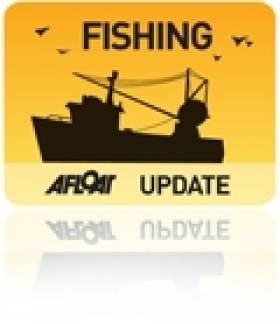Displaying items by tag: sustainable fishing
M&S Signs Up For New Responsible Fishing Scheme
#Fishing - The UK's new voluntary Responsible Fishing Scheme (RFS) has received a boost as Marks & Spencer became the first retailer to sign up to its charter for sustainable fishing.
From next year all British fishing boats supplying M&S supermarkets will have to be certified by the RFS, confirming that any seafood they catch has been done so responsibly and that their crews have a safe working environment.
International fishing fleets have until 2021 to get certified under the scheme if they're to continue supplying M&S stores.
“We’re passionate about being a responsible retailer," M&S food director Andy Adcock told edie.net about the move, part of the retailer's Plan A sustainability programme.
"We only buy fish from the most sustainable sources, a commitment we’ve worked tirelessly on for almost 20 years, and this pledge means our customers can shop with us knowing we’ve done everything possible to protect the marine environment and those working in our fish supply chain.”
However, M&S is candid that it can't influence the fishing industry alone, with the company's Hannah Macintyre saying that more collaboration will be needed across the industry to ensure that the RFS "will do for fishing standards what the MSC has done for fish stocks".
edie.net has more on the story HERE.
EU Fisheries Commissioner Visits Ireland to Discuss Policy
EU Commissioner for Maritime Affairs and Fisheries, Maria Damanaki will visit Ireland this week to discuss reform of the Common Fisheries Policy.
Commissioner Damanaki will speak tomorrow at the Institute of International and European Affairs where she will address Irish stakeholders on the new policy, which aims at preserving fish stocks at sustainable levels by managing fisheries in a responsible, science-based way.
She will also later meet with Minister for Agriculture, Fisheries and Food Simon Coveney.
On Friday she will travel to Galway with EU Commissioner for Research, Innovation and Science, Máire Geoghegan-Quinn, to visit the Marine Institute and participate in a roundtable on maritime policy with representatives of the Irish administration and the Irish maritime sector.
Commissioner Damanaki will also gauge the views of Irish stakeholders on the upcoming Atlantic Strategy under the Integrated Maritime Policy, which the European Commission is currently drawing up.
- EU Commissioner for Maritime Affairs and Fisheries
- Maria Damanaki
- Common Fisheries Policy
- Institute of International and European Affairs
- stakeholders
- sustainable fishing
- fishing
- fisheries
- Minister for Agriculture, Fisheries and Food
- Simon Coveney
- EU Commissioner for Research Innovation and Science
- Máire GeogheganQuinn
- Marine Insitute
- maritime policy
- Atlantic Strategy
- Integrated Maritime Policy
- European Commission
New Guide Service for Fly Fishing in Cork Harbour
A new guide service is now available for anyone wishing to sample bass and saltwater fly fishing on Ireland's south coast.
World Sea Fishing reports on Cork Harbour-based Richie Ryan, a specialist fly fishing guide who pilots the first boat fully licenced for saltwater fly fishing in Ireland.
Aboard the Sea Hawk, Ryan will impart his expert knowledge in catching bass, sea trout, mullet, pollack, mackerel and garfish, among others, in the waters of Cork Harbour.
According to World Sea Fishing's Mike Thrussell, guides such as Ryan "will become an essential part in sustaining the future of Irish bass fishing and their conservation".
For further details call 021 481 1103 (mobile 086 194 0744), e-mail i[email protected] or visit www.corkbass.com.

























